A truly stupid action on my part brought me back to tablet weaving. A friend always gave me her tablet weaving braids for selling on my markets. And the last time I got them, I left the bag with the tablet weaving braids and needlebound hats in the train. ![]()
Unfortunately no one came forward to give them back, so they remain lost. Gabi wasn’t mad at me and didn’t even let me pay her the materials, but I had such a bad conscience, I immediately ordered a weaving frame (Brettchenweber Shop/Silberkram), metal tablets (Messingbrettchen) and weaving yarn (Flinkhand Shop). I wanted to just redo all of the braids!
Below are the beauties I lost.
This happened two years ago… And now I finally finished two of the braids. I started with the pastel braid in blue, purple and green. The original was made from plant dyed silk (![]()
![]()
![]() ), my version is made from linen yarn. It is a rather simple threaded-in pattern with a regular turning rhythm (7 forward, 7 backward). This was done rather quickly, and after a while I even managed to see where I was in the pattern. I still think the process is very fascinating. You start with a bunch of loose threads and end up with a super sturdy braid with and intricate pattern.
), my version is made from linen yarn. It is a rather simple threaded-in pattern with a regular turning rhythm (7 forward, 7 backward). This was done rather quickly, and after a while I even managed to see where I was in the pattern. I still think the process is very fascinating. You start with a bunch of loose threads and end up with a super sturdy braid with and intricate pattern.
Next I did the infinite celtic knot in black an orange. It was a bit more difficult. It still is a threaded-in pattern, but half of the tablets have to ALWAYS be rotated forward. So for me to easier know my way, I threaded-in the yarn on two colours of tablets (silver & bronze). Still, there was another little problem: After a while the yarn would be twisted so hard above the tablets I wasn’t able to rotate them any more. Now I could have always rotated backwards instead, which would only have created a small break in the pattern. But this was out of the question of course, it is called the INFINITE celtic knot after all! ![]()
So I opened the knots of the yarn on the silver tablets (the ones always rotating forward) and wrapped them around cardboard spindles. Like this I was able to untwist them from time to time. But I had to somehow hold the thread tension, or I would have made a very irregular braid. So I pinched the loose threads provisorily between two small pieces of wooden board and fastened them to the remaining knotted threads with a screw clamp. This worked rather well, but untwisting the threads and drawing them along the frame was a big effort for which you basically needed four hands.
This method was easily improved: Two small pieces of wooden board with felt glued to the inside (so the threads are pinched more evenly) with two holes drilled into both of them. There you can fit two round-head screws (the ones with the extra big head) and close them with winged nuts. Now you can open an close the contraption without tools. I also looped a sturdy thread around the screws and knotted it onto the weaving frame with my favourite knot, the taut-line hitch, because you can adjust the tension. Now untwisting the threads is still a bit of effort, but you don’t drive yourself nuts. As a last improvement I would add some kind of comb to sort the threads. If they are crisscrossed the tension is very irregular.
I think I will keep at it this time. Weaving has a special fascination for me. Next I want to try weaving without a frame on my belt. And of course some historical patterns. Threaded-in patterns are without exception modern. I also dusted off some cotton crocheting yarn from by grandma. This is perfectly suited for experimenting.















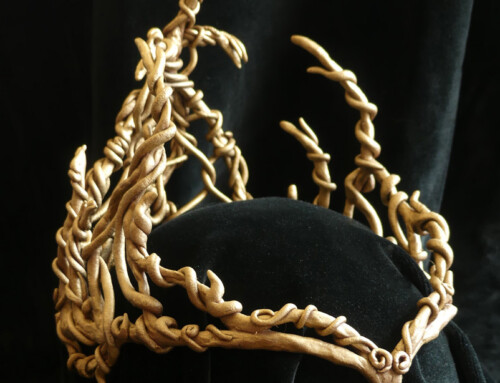
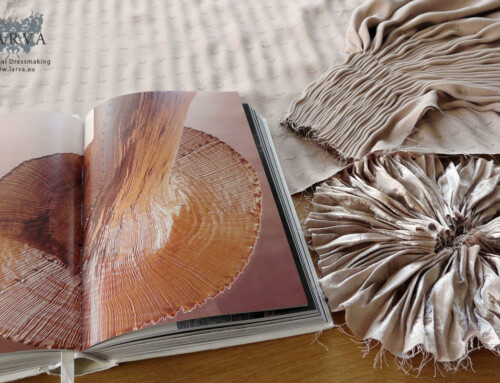
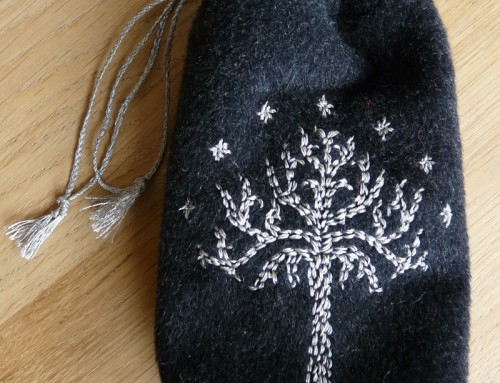
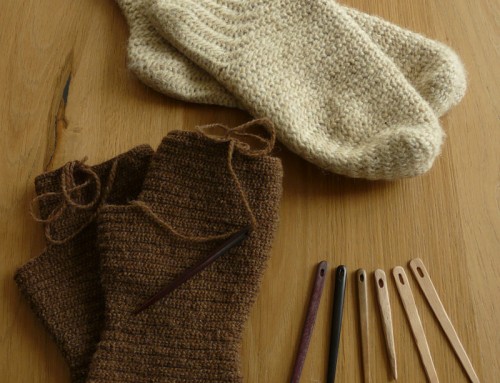

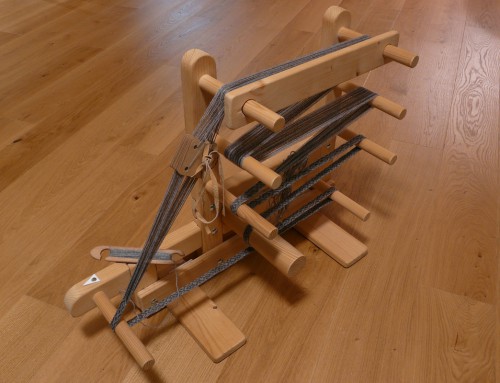
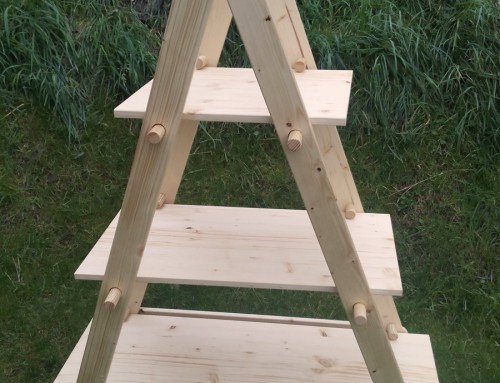

Leave A Comment